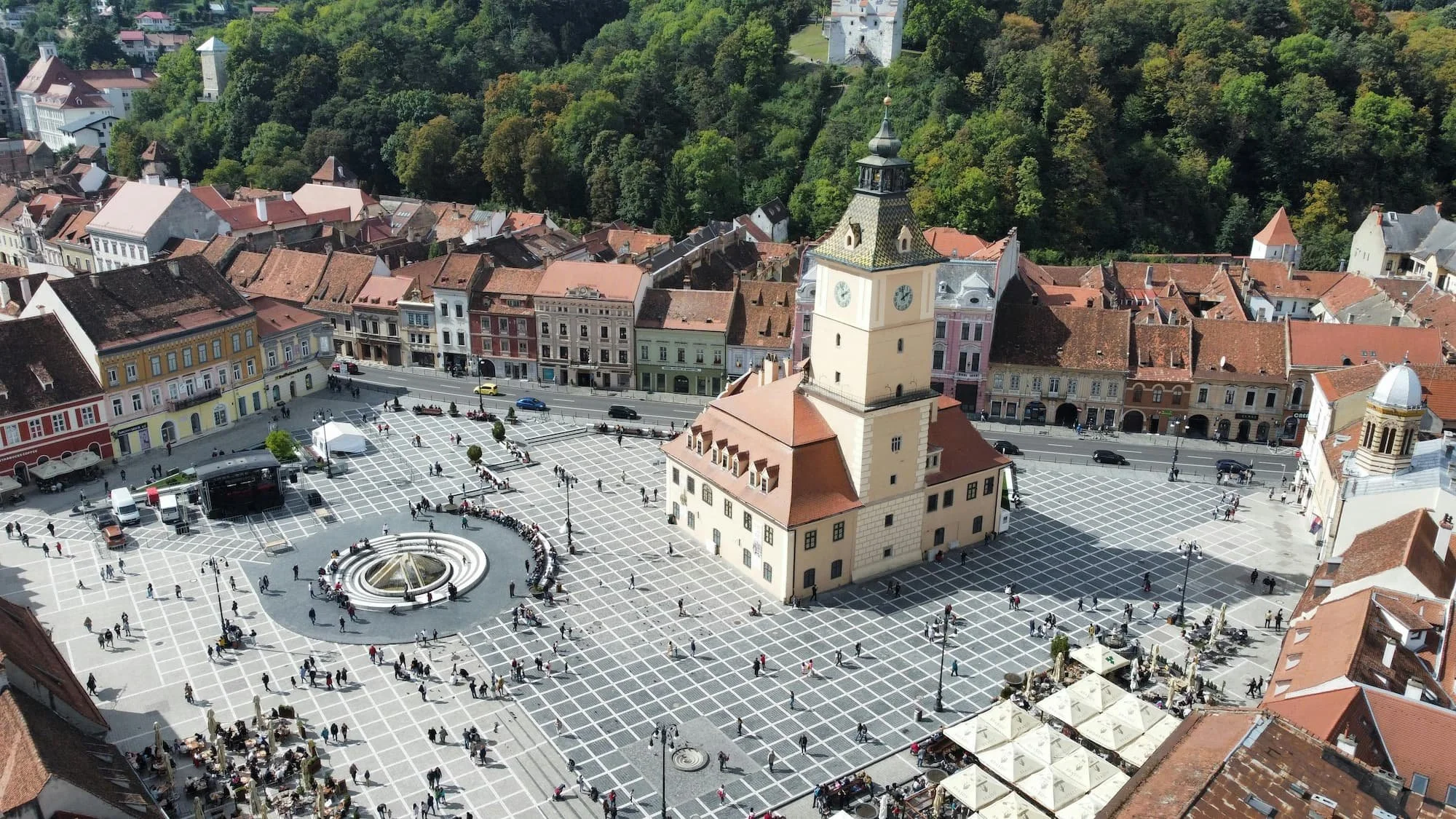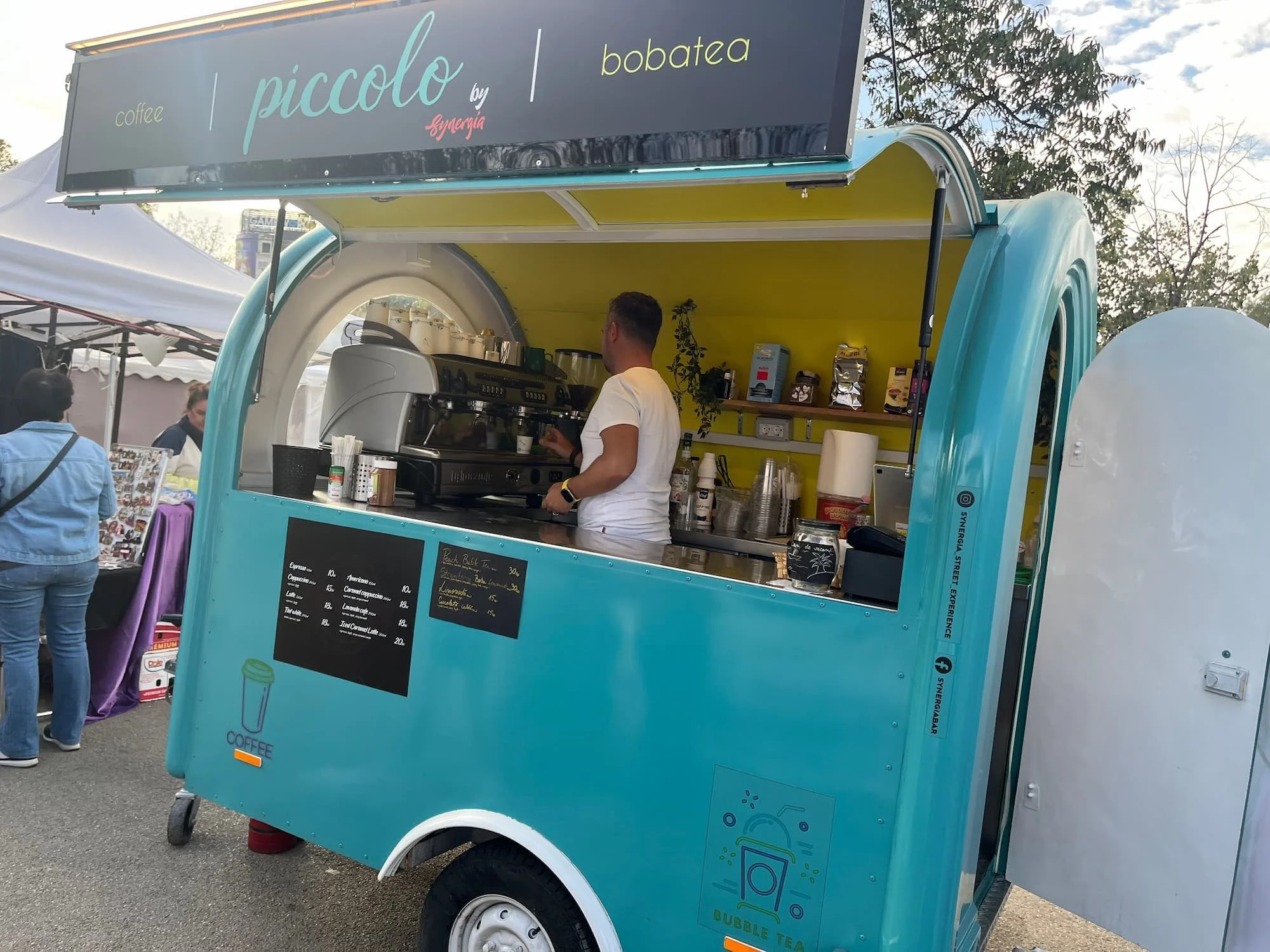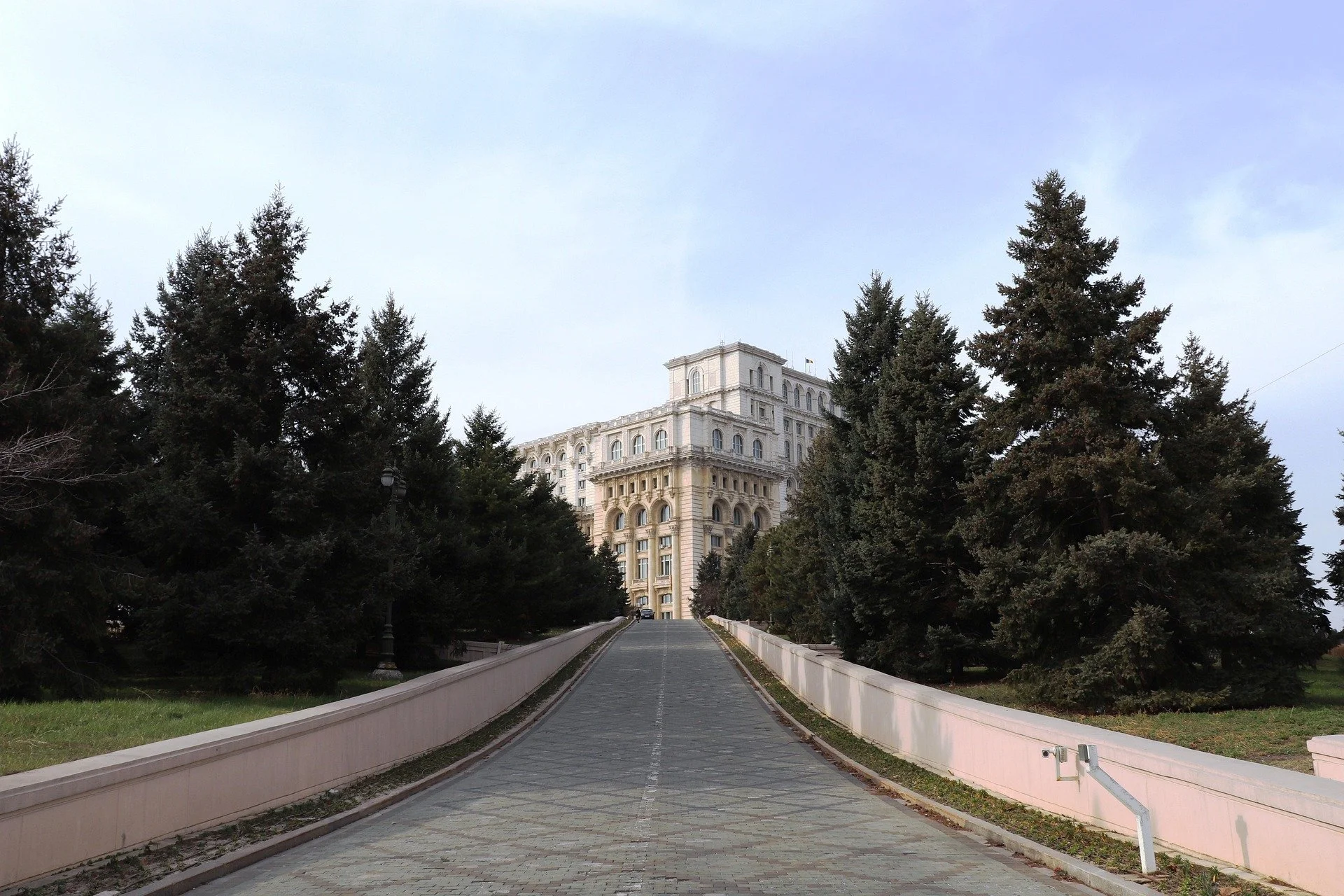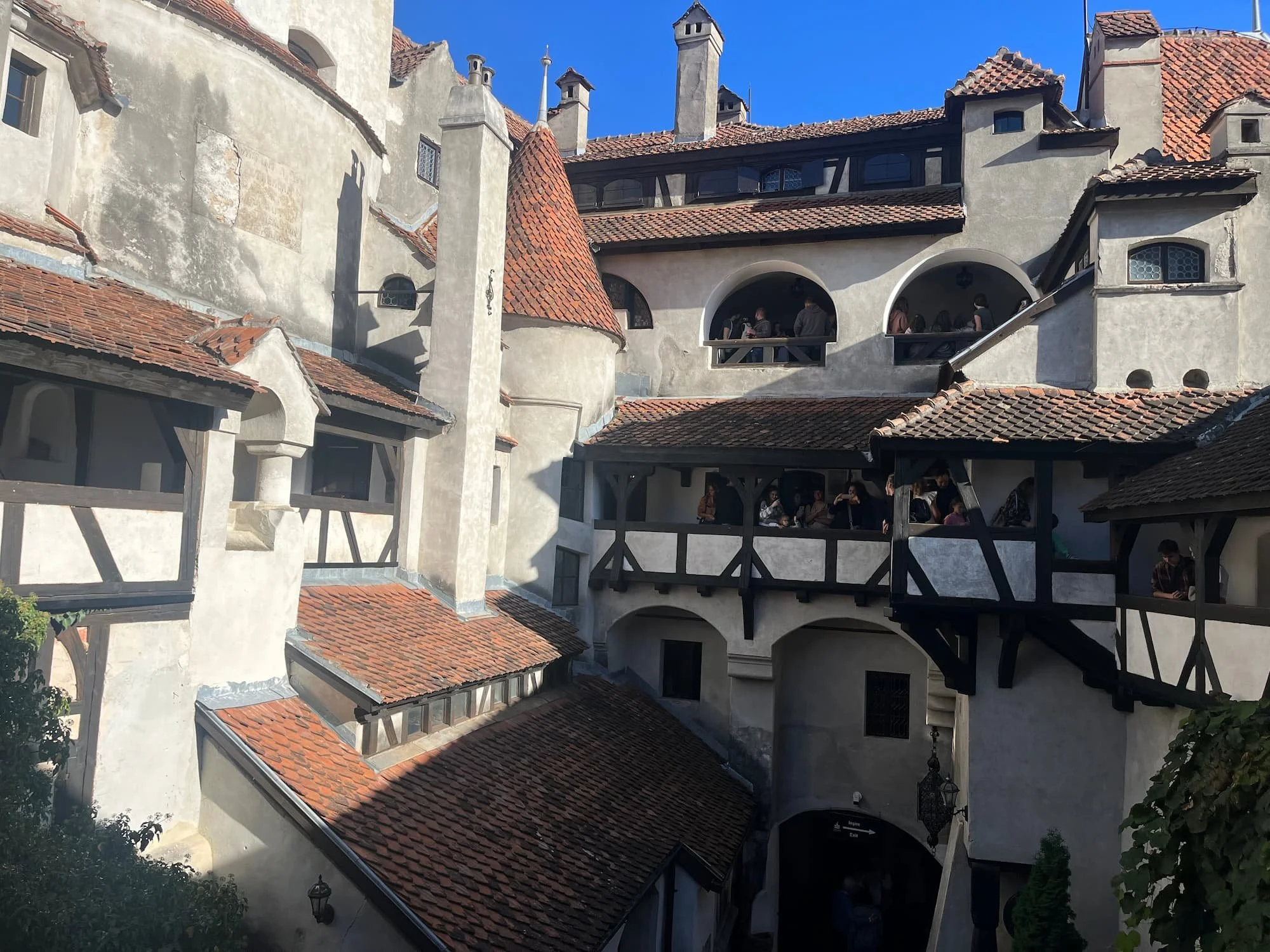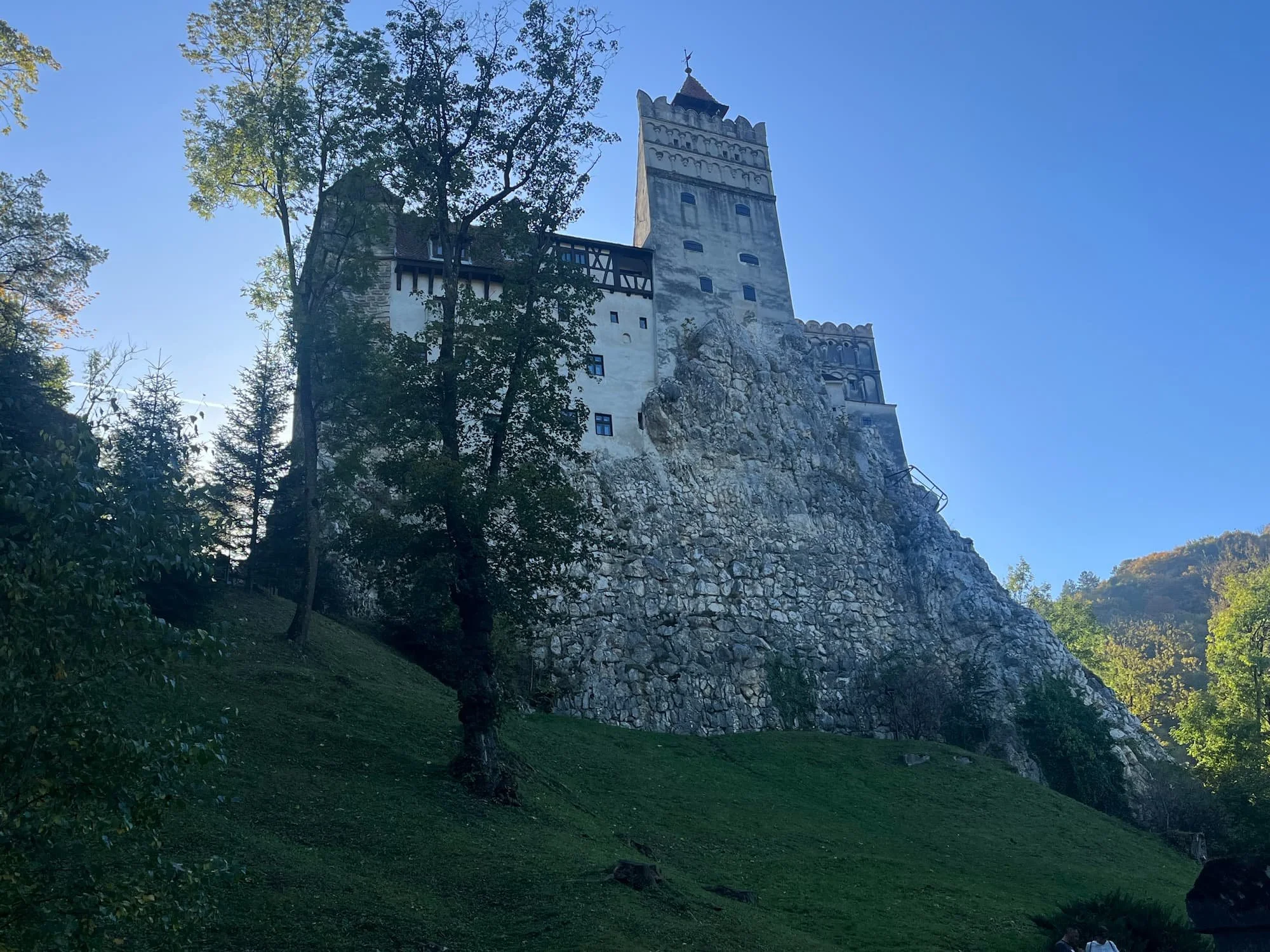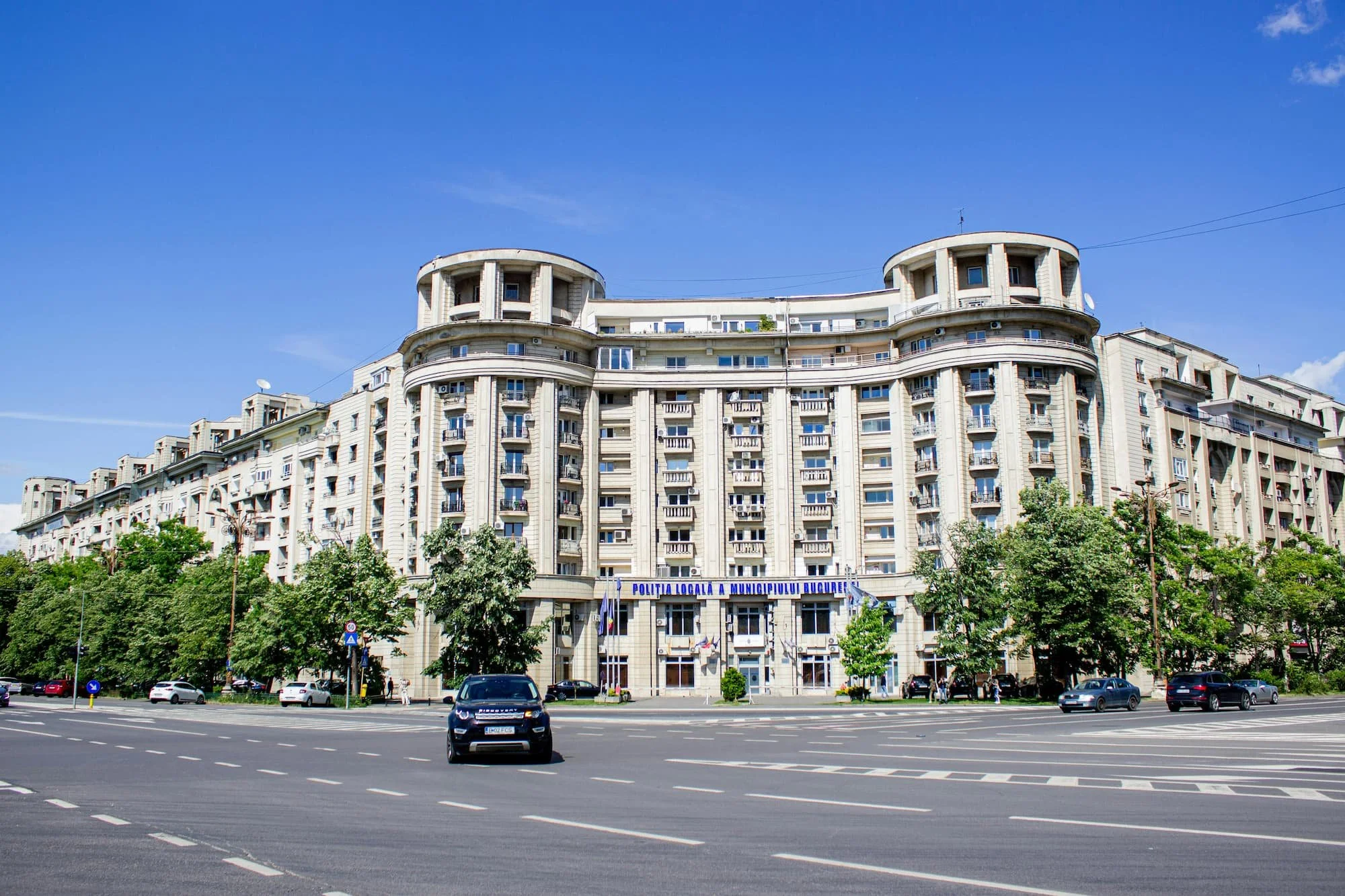5 Days in Romania: The Perfect Itinerary for First-Time Visitors.
Bucharest might just be my favorite European city — right up there with Rome.
Its grand boulevards whisper of Paris, its communist-era monuments still loom large, and yet there’s a playful modern energy that’s all its own.
Grab a £2 beer in the Old Town and you’ll see what I mean.
Then there’s Transylvania — a place that belongs on every traveller’s bucket list.
Think fairytale castles perched on misty hills, medieval squares echoing with church bells, and colourful streets that feel like stepping into a storybook.
I know planning a trip here can feel overwhelming…
Romania is vast, layered in history, and still delightfully under the radar.
That’s why I’ve crafted this 5-day itinerary, perfect for first-time visitors.
It hits all the highlights: from Bucharest’s bustling heart to Transylvania’s gothic gems…
So grab a coffee (or a local beer), bookmark this guide, and let’s start planning your dream trip to Romania.
➡️ Quick tip: I’ve included all my favourite hotels, skip-the-line tickets, and recommended trasnprot options — so you can book with confidence and just enjoy the adventure.
An awesome shot of Brasov from above.
Disclosure: I sometimes use affiliate marketing. This will not cost you anything, but helps with my travel costs. I only recommend companies I use myself.
Quick Mini Guide to Romania.
(from my own trip).
Where to stay:
Bucharest: I stayed in the Old Town (Lipscani) and absolutely loved being able to walk everywhere — from cafés to bars to grand squares. There was something unique and quirky about Vilacrosse Boutique Inn. ➡️ Check the colourful rooms out here.
Brasov: Hands down, stay inside the medieval centre. There’s nothing like that Transylvania feel first thing on a morning. Safrano Palace was a very comfortable night’s stay. ➡️ Rooms sometimes available in advance.
Best things to do:
Walk in Dracula’s shadow at Bran Castle 🧛♂️ — This Bran & Rasnov Fortress day tour is an incredible way to see the two castles without stressing about transport. ➡️ Book today.
Discover Bucharest’s vibrant Old Town — we joined this Bucharest walking & food tour on our first day, and it was the perfect way to get our bearings. ➡️ Check here.
How to use this itinerary.
This 5-day Romania itinerary is exactly how I planned my own first trip — blending vibrant cities, gothic castles, and colourful medieval towns, all at a relaxed, no-rush pace.
You can follow it day by day or simply use it as a blueprint to shape your own Romanian adventure.
Some personal travel advice for Romania:
I booked my hotels ahead in each city so I didn’t have to stress about last-minute choices — you can see my favourite stays linked throughout this guide.
And while you can piece together buses and trains, I found renting a car made everything 10x easier (and let us stop at so many gorgeous little roadside villages).
Romania is much simpler to drive than you might expect, and fuel + parking are super affordable.
➡️ I rented a car for this trip and driving through Romania was honestly the best decision — total freedom to explore tiny villages & mountain roads. ➡️ You can compare rental prices here.
The beautiful Peles Castle.
Day 1 - Explore Bucharest.
My first full day in Bucharest set the tone for why this city is now right up there with Rome on my favourites list.
From grand boulevards to quirky street art, communist ghosts to hipster bars, I found Bucharest to be a real mix, and super affordable.
I can see why the Romanian capital is one of the most popular cities in the Balkans.
It’s the sort of place where you’ll spot a crumbling old mansion right beside a trendy café, yet it works, and is actually an Instagrammers dream!
If it’s your first time here, I’d 100% recommend booking a hotel right in the Old Town (Lipscani) or near Piata Unirii.
Being central makes all the difference — you can explore by foot, pop back for a rest, and dive into the nightlife without worrying about taxis.
The Dâmbovița River in the heart of the capital.
Wander the Old Town (Lipscani).
We kicked off our first day with a slow wander through Lipscani, Bucharest’s Old Town — this area has so much going on, day and night.
It’s compact enough that you can just let yourself get a bit lost…
Which is exactly what we did, stopping wherever caught our eye.
Cobbled streets, themed bars, and modern coffee shops are broken up by old Soviet buildings. A classic architectural juxtaposition!
If you’re into architecture, you’ll love the mix here. On one street we spotted neo-classical façades and ornate Orthodox churches practically side by side.
One spot you shouldn’t miss is Stavropoleos Monastery, a tiny 18th-century gem right in the heart of Lipscani.
It’s so easy to walk past, but step through the archway and you’ll find a peaceful courtyard with intricately carved stone columns and some tranquillity.
Little tip: Start your morning early if you can. The streets are very quiet around 9am, and you’ll have the best light for photos before the day gets hot and the crowds arrive.
On our last day in the capital we managed to beat the crowds and it was a much nicer experience.
Street art in the Old Town area of Bucharest.
Cafés, markets & street art.
By late morning we were more than ready for our next Bucharest mission: find good coffee and a cheap local beer — both of which are laughably easy in this city.
One of the biggest draws to Bucharest for many visitors!
We grabbed seats at a little terrace in Lipscani, ordered two cappuccinos and ended up staying for a while, just soaking up the distinct local atmosphere!
➡️ Origo serves strong coffee and has that awesome Bucharest vibe.
No one is in a hurry in the Romanian capital, everyone just seems to be enjoying a slower pace of life, as with many of the Balkan cities I have visited.
Enjoying a craft ale in the Old Town.
If you’re after a proper local experience (and don’t mind hopping on the metro for a bit), head to Obor Market.
It’s one of the largest and oldest markets in Bucharest — absolutely buzzing with vendors selling a wide mix of items.
Although it wasn’t very touristy, we walked away with a bag full of local snacks to try.
Another awesome spot for coffee.
Another surprise was just how good the street art scene is here…
One of my favourite free activities in new destinations!
Around Strada Arthur Verona, the walls are basically an ever-changing outdoor gallery.
We spent nearly an hour wandering side streets looking for murals, some small and tucked away, others huge and splashed across entire buildings.
More gritty vibes in a fun city.
Day 2 - More Bucharest.
After easing into the city on day one, we spent our second day diving deeper into Bucharest’s grand boulevards and fascinating mix of old and new.
From colossal communist landmarks to quiet modern parks, the Romanian capital kept surprising us at every turn.
Today should be about soaking up Bucharest’s complex history, checking out one of its best museums, its most famous building, and then slowing things down with a stroll through one of its beautiful green spaces with a nice coffee.
The impressive Parliament Building in Bucharest.
Visit the Parliament Building (Palace of the Parliament).
You can’t really visit Bucharest without seeing the Palace of the Parliament, it’s absolutely massive in every way.
It caught our attention as soon as we drove past it on the way to the centre from the airport.
This is the second largest administrative building in the world (after the Pentagon), and walking up to it, we got the gist of just how crazy Ceaușescu’s vision for the city was just decades ago.
We booked a guided tour and it was 100% worth it!
We couldn’t believe it when Vlad told us the story about how they actually flattened local neighbourhoods just to build the iconic building.
Tip: You must book your tickets in advance — there are timed slots, and they often fill up early.
➡️ Book your skip-the-line Parliament tour here.
Exploring the grounds.
The Museum of Bucharest (Palatul Suțu).
After seeing the impressive scale of the Parliament, we wanted to visit a smaller venue, which felt a little more traditional.
The Museum of Bucharest is a great historical place to visit.
Housed in the elegant Suțu Palace, it is right near University Square, so it is located very central.
It is nowhere near the size of the Palace, however, it gives a fascinating overview of the city’s evolution — from medieval roots to the communist era.
The old photos and maps of Bucharest before the 20th-century upheaval are pretty cool to see.
Bucharest has seen a great rise in architecture within the last few decades.
A perfect stop for history lovers, and it was really quiet, which made it easier to observe all the exhibits.
Soviet looking apartments.
A walk in one of Bucharest’s beautiful parks.
I didn’t expect the Romanian capital to have so many beautiful parks… They offer an awesome contrast to the old Soviet buildings.
You can still expect to see Soviet style statues in some of them though!
We spent a chilled afternoon wandering through Cișmigiu Gardens, right in the heart of the city.
There’s a lake where you can rent little rowboats, winding paths lined with plenty of colour, and shaded benches where we chilled with a coffee.
If you’re after something even larger, Herastrau Park (now officially King Michael I Park) is also a fantastic option… Especially if you’re staying longer in the city. It wraps around a huge lake and is perfect for a bike ride or scenic walk.
Next up: Day 3 — time to hit the road and explore Transylvania’s most famous castles, including the legendary Bran Castle and the elegant Peleș Palace.
Sat near the fountains in Piața Unirii in Bucharest.
Day 3 - Visit the castles of Transylvania.
Day 3 was easily one of the most memorable of the trip, if not my whole time in the Balkans…
Time to set off to explore two of Transylvania’s legendary castles - Bran and Peleș.
As you would expect, it’s touristy… And very hyped... But I had an amazing day!
There’s something about driving into the Carpathian Mountains, past thick forests and crumbling villages, and arriving at a hilltop castle that really brought the Dracula myth to life.
We decided to visit both Bran Castle and Peleș Castle in one day, and it worked perfectly — with a relaxed start, a scenic drive, and enough time to soak up the history (and the views) at each.
Enjoying the views at Bran Castle.
How to visit Bran & Peleș in one day.
The easiest way to do both castles in a day is by renting a car — as it gives you total freedom and lets you avoid the rush of group tours.
We picked up a car in Bucharest and made our own Transylvanian road trip, which was a huge highlight in itself.
Route tip:
Start early from Bucharest (Before 8am).
Drive to Sinaia first (Peleș Castle).
Then on to Bran Castle (via Rasnov if you have time).
End the day in Brașov (stay overnight if possible).
➡️ Want to drive the same route? Compare Romania car rental deals here.
If you’d prefer not to drive, there are some brilliant small-group tours that cover both castles in one day from Bucharest.
Bran Castle – “Dracula’s Castle”.
The first thing I overheard from a nearby tour guide as we arrived at the famous castle was that ‘Bran Castle isn’t actually Dracula’s castle’, so that dispelled that myth straight away.
However, it is the most famous castle in Romania for a reason…
It’s like something straight out of a horror movie, perched high on a rocky cliff with turrets, tunnels, and a genuinely moody vibe that fits its spooky reputation perfectly.
This castle is much BUSIER than I ever expected, so we were so happy to pre-buy our skip the line tickets, as the queue of tour groups was literally stretching into the car park.
As there is only one main route from Bucharest to the Transylvanian castles, most of the tour groups seem to arrive at similar times, creating a very crowded experience.
Bran Castle can get very crowded.
Once inside, you’ll walk through winding staircases, small rooms filled with royal memorabilia, and exhibitions on Vlad the Impaler, the 15th-century prince who inspired the Dracula myth.
It wasn’t my best travel experience ever due to the crowds, as they can get intense, especially in the summer, however, as we used the pre-booked tickets, we did manage to see all of the castle… Before getting too hot and bothered!
The setting tells an awesome story… Through the architecture, exhibits, and general vibe of the castle.
The best time to visit Transylvania is around Halloween if you want to enjoy the planned events.
Personal advice:
Buy your tickets online in advance — the queue outside gets huge by mid-morning.
Book skip-the-line Bran Castle entry here.
📍 Location: Bran village (40 min from Brașov).
🕒 Open daily | Allow ~1.5 hrs for visit.
Bonus tip: There’s a great little local market near the castle selling cheese, jams, clothing, and plenty of Dracula themed souvenirs.
Walking up towards Bran Castle.
Peleș Castle – Royal Romanian Beauty.
As soon as we pulled up at Peleș Castle it had a completely different vibe to Bran Castle…
Grander, more elegant, and much more picturesque!
It is easily one of the most beautiful castles I’ve ever seen, and exactly what I had imagined before visiting Transylvania.
Apparently this was the former summer residence of the Romanian royal family, which explains why the interiors feel way more stunning compared to Bran.
There is everything you would expect from a castle inside; carved wood, stained glass, weapons halls, secret doors…
It also felt like a movie set, just less spooky than Bran Castle.
A guided tour with an expert is better suited to this castle, as it is bigger, so it feels way less crowded.
At Bran Castle we wanted to get in and out ASAP, but at Peles, it is awesome walking around slowly, while listening to its very interesting history.
➡️ Secure the expert guide in advance here.
Tickets can be confusing — get the full-access one if you want to see the upper floors (worth it).
Location: Sinaia (1.5–2 hrs from Bucharest).
Closed Mondays & some holidays.
Entry: 60 Lei for full tour (£10).
Peleș Castle.
End the day in Brașov.
After exploring both castles, we drove on to Brașov, where we stayed overnight.
I highly recommend doing the same, as it sets up perfectly for a day in the charming town.
You’ll get a proper taste of Transylvanian charm (and wake up to mountain views the next morning).
The armoury room is impressive.
Day 4 - A day in charming Brasov.
By Day 4, we were fully in Transylvania mode…
And Brașov turned out to be one of my favourite stops of the whole trip… There is a reason why it is one of the most popular cities in Romania!
Surrounded by the Carpathian Mountains and bursting with medieval charm, I felt that Brașov felt a little like a postcard. It is a world away from the European feel of Bucharest- — much more traditional, slower-paced, and incredibly scenic.
It’s compact enough to explore entirely on foot, but full of hidden corners, colourful buildings, and plenty of spots to chill in a nice ambiance.
but packed with hidden corners, colourful buildings, and laid-back spots perfect for relaxing with a drink. Romania gets hot in the summer, so the shaded cafés and breezy main square are ideal for mid-day stops.
If you’re dreaming of a storybook town in Eastern Europe, this is it.
An iconic building.
The Black Church (Biserica Neagră).
This is easily Brașov’s most iconic building, and you can’t miss it… Literally.
The Black Church dominates the old town skyline with its dark, gothic silhouette and towering steeple.
We paid just a few lei for entry, and it’s 100% worth stepping inside.
The interior is stunning, with huge vaulted ceilings, a giant organ (the biggest in Southeast Europe, apparently), and a surprisingly peaceful vibe.
Even if you don’t want to go inside, the architecture is fascinating to explore, and the church is located right next to the main square.
Location: Just off the main square (Piața Sfatului)
Entry: 20 Lei (£3.50) — cash only when we visited
Open daily, except during services
The famous Black Church of Brasov.
An awesome atmosphere in the main square.
Brașov’s main square, Piața Sfatului, might just be one of the most photogenic in all of Romania.
It’s surrounded by pastel baroque buildings, open-air cafés, and typical street performers which can be found in many of the popular Balkans destinations.
We grabbed a table at a café facing the Council House (that striking salmon-pink building in the middle), ordered two local beers, and a meal for a very reasonable price (around £10 per person for both).
We spent over an hour enjoying our time in the sunshine and people watching.
Sitting outside is a very popular activity in Romania, so if you head over there in summer or autumn months, expect some fresh air.
This square comes alive in the evenings, too, with locals, and tourists enjoying the lively vibe.
💡 Local note: The cafés here are slightly pricier than elsewhere in town — but I found the views to be worth it.
Planning to stay overnight?
We stayed right near Piața Sfatului and loved waking up to views of the square.
The centre of Brasov.
The Brasov sign.
You’ll notice it straight away… The Hollywood-style Brașov sign perched high above the town on Mount Tâmpa.
It’s a bit of a climb, but the views are 100% worth it/
We hiked up via the Tâmpa Mountain Trail, which starts near the cable car station. It’s a proper woodland walk, with plenty of shade, and very few people around.
It took us just under an hour, and the views from the top were epic. You’ll see the entire medieval town laid out below, framed by mountains.
This is the Romania I had seen in the photos before we headed over.
If you’re short on time (or energy), there’s also a cable car that takes you straight up. Either way, don’t miss the lookout point just behind the sign — it’s less crowded and has one of the best panoramic views in Transylvania.
Cable car price: ~25 Lei return.
Hike difficulty: Moderate — trainers are fine, just bring water.
Best time for photos: Late afternoon light is beautiful up top.
📍 Looking for a guided experience?
This Brașov walking tour hits all the major sights — perfect if you want the history behind what you're seeing without doing all the research.
A local souvenir seller in Brasov.
Day 5 - Back to the capital.
After a few days exploring castles and cobbled towns in Transylvania, we headed back to Bucharest for a final evening in the capital.
Since we’d already covered the major highlights, this was more of a random kind of day.
Here are is a fun activity you can consider to round off your first time in Romania:
Carpathian mountains near Brasov on our way back to Bucharest.
Dive deeper into Bucharest’s Soviet past.
If you’ve still got energy (or curiosity), this is a great time to explore Bucharest’s Soviet-era architecture — especially if you’re into modern history.
The Victory of Socialism Monument, House of the Free Press, and Unirii Boulevard are all must-visit attractions in terms of history.
Want a deeper understanding?
Take a communist-era walking tour to learn about Ceaușescu, surveillance, and the real impact of Romania’s former regime.
Central Bucharest.
Heading home?
If you’re flying out on Day 5, leave plenty of time to get to Henri Coandă International Airport (OTP) — the traffic in Bucharest can get very busy, especially in the late afternoon.
➡️ Need a hotel for your final night? I recommend staying near Piata Unirii or Universitate for easy access to the airport and metro links. Compare central hotel deals here.
One of many iconic statues in Bucharest.
FAQ for visiting Romania as a first-time visitor.
Whether you’re curious about safety, costs, or how easy it is to get around, these are the questions I hear most from people planning their first trip to Romania — along with my honest take after exploring it myself:
Is Romania safe?
Yes — Romania is actually one of the safest countries I’ve travelled to.
I felt completely at ease wandering around Bucharest’s Old Town at night or strolling through tiny Transylvanian villages.
Like anywhere in Europe, pickpocketing can happen in busy tourist spots (especially near major attractions or on crowded buses), so keep your bag zipped and your phone secure.
💡 Pro tip: I always use a small anti-theft crossbody when I travel — it’s the easiest way to keep everything safe and still have hands free for photos.
A traditional Romanian village near Brasov.
How expensive is Romania?
Honestly, Romania is one of the best-value destinations in Europe.
We had amazing meals for under £8, local wines for £3 a glass, and our boutique hotel in Bucharest was less than half the price of similar spots in Italy or France. Even entrance fees to places like Bran Castle or Peleș Castle are very reasonable.
➡️ Want to see what your trip might cost? Check hotel prices in Bucharest and Brasov here — you’ll probably be surprised how affordable it all is.
What’s the best way to get around Romania?
You can use trains and buses between big cities, but I found renting a car made everything 10x easier.
It gave us the freedom to explore tiny villages, take spontaneous stops for photos, and travel on our own schedule. Driving here was much simpler than I expected — roads are good, fuel is cheap, and parking was rarely an issue.
It is a very unique journey through the Romanian mountains.
Is it easy to use English in Romania?
Yes — especially in Bucharest and tourist towns like Brasov.
Most younger people speak at least some English, and menus are often in multiple languages. A few words of Romanian go a long way though. Even just a cheerful “Mulțumesc!” (thank you) made our interactions more pleasant.
What’s the food like?
As with many Balkan countries - hearty, rustic and delicious — I saw many stews, grilled meats, stuffed cabbage rolls (sarmale), and fried dough desserts (papanași).. A distinct offring.
Also, don’t miss trying local Romanian wine, it’s surprisingly tasty and very cheap.
✈️ Ready to plan your trip?
✅ Compare hotels in Bucharest.
✅ Check day tour availability.
✅ Rent a car for the full route.
✅ Download a Romania eSIM.
I hope this answered some of your big questions and helped ease any first-time nerves.
Drop a comment or message if you have any other questions about Romania.
Disclosure: I sometimes use affiliate marketing. This will not cost you anything, but helps with my travel costs. I only recommend companies I use myself.

